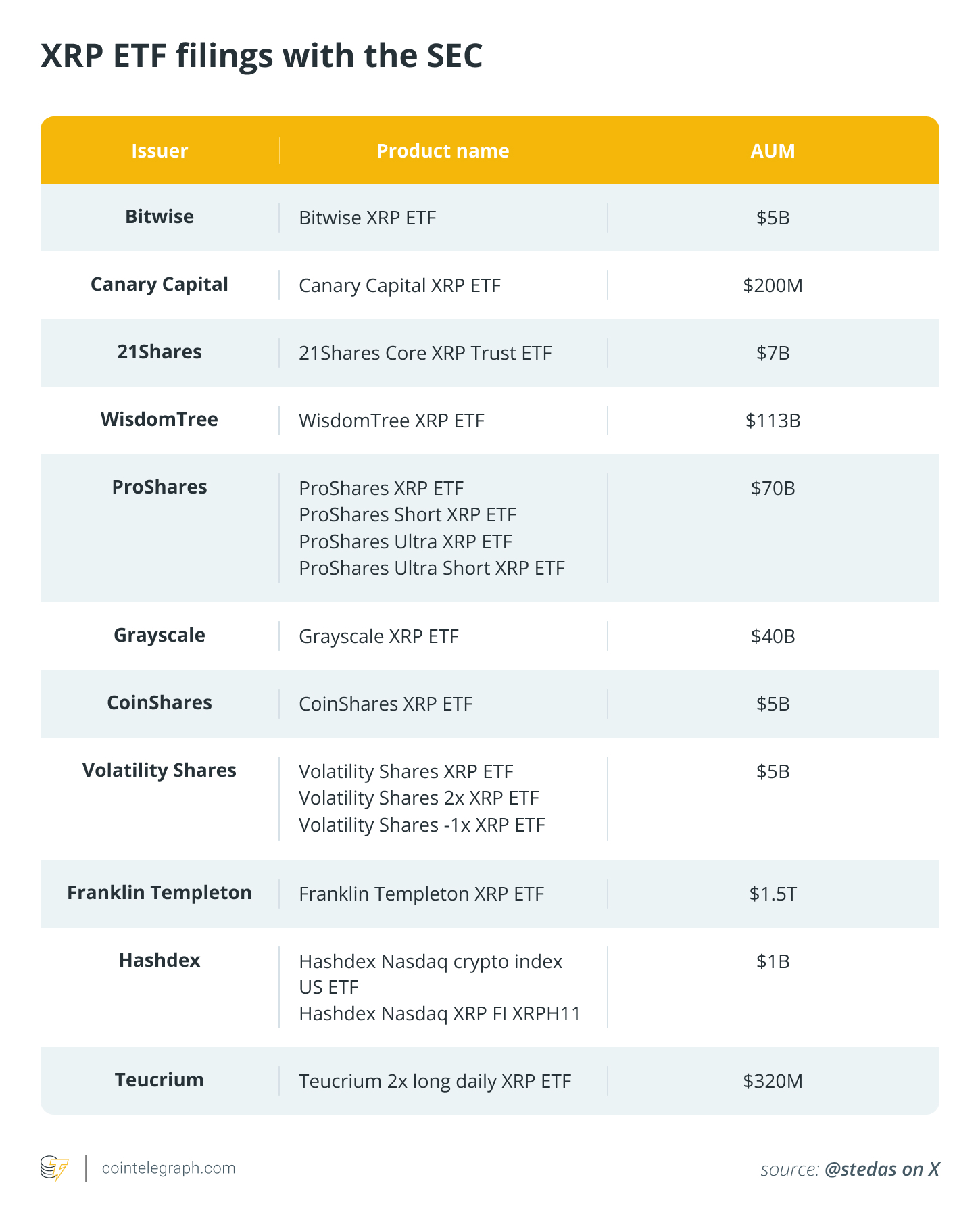
XRP’s Legal Triumph: A Game-Changer for Wall Street Investors
How Regulatory Clarity Propelled XRP Past Ether
XRP, created by Ripple Labs in 2012, was initially designed to facilitate swift and low-cost cross-border transactions. However, its expansion faced significant setbacks due to a lawsuit from the US Securities and Exchange Commission (SEC) in 2020, which accused Ripple of engaging in unregistered security offerings.
The prolonged legal battle cast uncertainty on XRP’s regulatory status, leading to hesitance from banks and financial institutions to utilize its network. Consequently, portfolio managers regarded XRP as a high-risk investment, stunting its growth compared to rivals like Ether.
Even with this challenge, XRP was gradually gaining investor interest, all while Ether retained its position as the second-largest cryptocurrency after Bitcoin, bolstered by a thriving ecosystem comprising decentralized finance (DeFi), non-fungible tokens (NFTs), and smart contracts. Nevertheless, Ether faced obstacles too, notably issues relating to scalability and high transaction costs.
As the focus on quicker, more economical settlements intensified, questions arose regarding Ether’s sustainability in a competitive landscape. With XRP’s recent legal uncertainties resolved, it stands ready to capitalize on renewed interest.
The SEC Settlement and Institutional Renewal
In August 2025, Ripple and the SEC reached a settlement, concluding a nearly five-year legal confrontation. This agreement, which included both parties dropping their appeals, established that XRP is not classified as a security in secondary market transactions.
This settlement worth $125 million effectively eliminated years of regulatory ambiguity surrounding XRP, reinstating institutional confidence and paving the way for renewed adoption.
Post-settlement, clearer regulations enabled the introduction of new financial products, such as proposed XRP exchange-traded funds (ETFs) and enhanced exchange listings. The SEC is anticipated to rule on multiple spot XRP ETF applications by October 2025. While regulatory uncertainties still loom over many cryptocurrencies, XRP now enjoys a stronger standing with institutional and Wall Street investors.
Did you know? Wall Street derives its name from a wooden barricade built by Dutch settlers in the 1600s to shield New Amsterdam (present-day New York City) from incursions.
Market Signs of Institutional Interest
Even prior to the settlement being finalized in August 2025, signs showing renewed enthusiasm for XRP had already emerged. In July, XRP’s price soared, accompanied by increased trading volumes and heightened institutional accumulation.
Custodial data from BitGo reported that XRP constituted 3.9% of its holdings as of June 30, 2025, indicating a growing share in regulated portfolios. This inclusion reflects a steady institutional interest in XRP’s compliance profile and its utility.
In May 2025, the CME Group initiated XRP futures trading, generating $542 million in trading volume during its debut month, with approximately 45% of this volume coming from outside North America. Open interest began at around $70.5 million and surged past $1 billion by August, signaling growing demand for regulated exposure to XRP.
As of October 2025, the SEC was reviewing a multitude of spot XRP ETF applications with submissions from established firms like Grayscale, Bitwise, 21Shares, and Canary Capital. The involvement of reputable asset managers lends credibility to the increasing momentum towards XRP-based ETFs.
XRP’s Competition with Ether in 2025
In 2025, XRP achieved notable advancements compared to Ether across various key metrics, indicating a shift favoring institutional acceptance and market sentiment.
The SEC’s resolution with Ripple removed a significant regulatory barrier for XRP, providing it with legal clarity akin to that of Ether. While Ethereum’s blockchain prioritizes DeFi and smart contracts, XRP Ledger emphasizes payments, liquidity, and efficient cross-border transactions. With transaction settlement times of merely three to five seconds and minimal costs, XRP excels in payment efficiency.
XRP has experienced pronounced growth in 2025, evidenced by substantial price increases and stable trading volumes, which mirror a resurgence in investor confidence. At times throughout the year, XRP has outperformed Ether, suggesting a pivot towards utility-enhanced assets with more defined regulatory support.
Did you know? A US court ruling in 2023 concluded that XRP transactions on public exchanges do not classify as securities transactions, granting crucial legal clarity.
Impacts on Investors and Market Dynamics
XRP’s progress in 2025 is significant for investors, institutions, and the broader crypto landscape. Its trajectory highlights how utility-centric assets shape investment strategies and market dynamics.
Key Implications:
- For investors: XRP’s design as a utility asset bridges fiat and digital systems, with the SEC ruling lessening much of the legal ambiguity surrounding it.
- For institutional adoption: XRP is increasingly recognized as a benchmark for regulated crypto integration, further affirmed by proposed ETFs and structured offerings.
- For financial markets: XRP’s rising momentum might shift focus toward assets encouraged by utility over speculation, potentially influencing regulatory attitudes towards other cryptocurrencies. Nevertheless, its long-term competition will still encompass central bank digital currencies (CBDCs) and stablecoins, posing both opportunities and threats.
Did you know? Unlike mined cryptocurrencies, all 100 billion XRP tokens were pre-mined at launch in 2012. Ripple Labs retains a substantial portion — primarily held in escrow — to regulate liquidity and distribution.
Concerns, Risks, and Counterarguments
Despite XRP’s recent successes, several factors cloud its future outlook, including international regulatory challenges, emerging technologies, and other market uncertainties.
Key Concerns:
- Global regulatory challenges: While the SEC has resolved its case with Ripple in the US, similar regulatory obstacles may exist in regions like Europe and Asia.
- New technologies emerging: Technological advancements and intensifying competition remain critical concerns. Other currencies focused on payments or newly established blockchain technologies could eventually impede XRP’s advantages in speed and cost.
- Reliance on institutional investment: In contrast to Ether and many other cryptocurrencies, XRP’s growth heavily relies on institutional support. A decline in such interest could hinder its expansion.
- Limited developer engagement: Ether’s strengths stem from its extensive developer community, a variety of decentralized applications, and continual innovation — areas where XRP currently lags.
These elements suggest that while XRP provides evident utility, sustaining long-term leadership requires further ecosystem development. Overcoming regulatory inconsistencies globally and minimizing dependence on institutional investment will be critical for its continual success.



